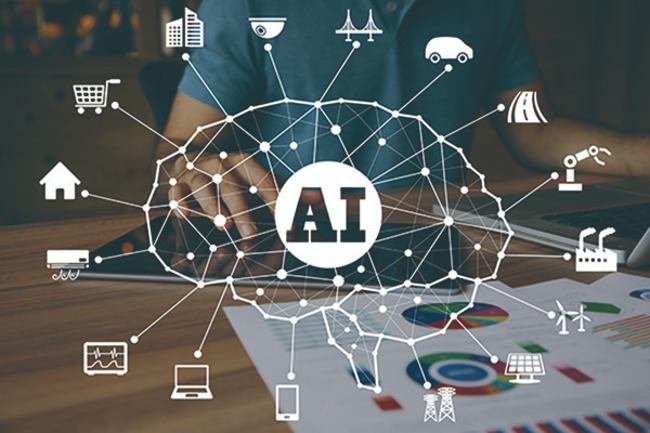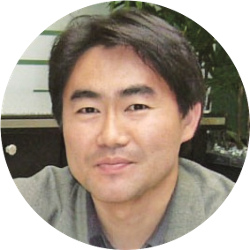Generative AI, including Chat GPT, is gradually permeating our lives. While very convenient, the information output is not always correct. How to use generation AI well and have a relationship...? We spoke to Dr. Miyamori, who says, ``You need to know its characteristics and precautions.''

What is Generative AI
Generative AI is AI that can "create" words, images, etc. Conventional AI was an understanding-type AI that focused on "understanding" things such as words and images. Generation AI has existed for some time, but its performance was not high, so it did not receive much attention until the appearance of Chat GPT.
Chat GPT is a representative example of a generative AI that can interact with people fluently, answering human questions, suggesting ideas, helping with writing, and responding to various requests. . There have been systems for question answering and dialogue in natural languages such as Japanese, but ChatGPT's unique feature is that the quality of the output text is very high. It is very different from previous systems in that it not only summarizes text but also summarizes it in bullet points and table format.
On the other hand, the use of generative AI that creates images is also expanding. For example, building an AI that diagnoses diseases from X-ray images requires a large amount of high-quality X-ray images, but in the case of rare diseases, it is difficult to collect such X-ray images. . Therefore, it has been reported that disease diagnosis performance can be improved by training with the addition of pseudo-X-ray images created by image generation AI. A similar use is being made to detect illegal fishing vessels using satellite images. The impact of generative AI on our lives and society is significant, and legislation is currently progressing at a rapid pace around the world.
What are the problems with generative AI?
Although generative AI may seem convenient, there are problems. One is that the accuracy of the output content cannot be guaranteed. For example, have you ever asked Chat GPT for a restaurant recommendation and received a fictitious store name and address? Please be careful as the answers are very natural. Be especially careful when dealing with medical or legal matters. Another problem is that ``human common sense'' does not apply. for example,
Chat GPT has no problem suggesting that it ignores the law. If you ask them for ideas on how to increase sales at an izakaya bar, they may offer suggestions such as offering alcohol to minors.
One of the reasons for these problems is that the mechanism by which generative AI learns sentences is different from that of humans. For example, a generative AI (Large-Scale Language Model; also called LLM) that handles words, such as Chat GPT, learns which word is most likely to appear next to a certain word based on a huge amount of sentences collected from the internet. To do. In other words, generative AI such as Chat GPT can only acquire knowledge based purely on the regularity of words (Note).
On the other hand, humans acquire language knowledge by receiving many stimuli from the outside world through their bodies and five senses. This type of learning is not possible for Chat GPT and other devices that do not have a physical body, so there is currently a large gap between human senses and knowledge.
Note: Regarding Chat GPT, a new version called GPT-2023V was announced in September 9, and it can now handle not only words but also images.
Message to high school students
To properly understand the mechanism of generative AI such as Chat GPT, it is not enough to learn programming; knowledge of mathematics is also essential. You don't have to be particularly good at math, but you should study it so you don't feel like you're not good at it. Additionally, AI technology is evolving very quickly, and many of the latest results are announced in English, so we recommend that you constantly improve your English skills.
You may have some trouble choosing a career path, but I would like you to pay close attention to social trends and find a field that excites you and that you think will be fun. Generative AI is a new technology that is bringing about changes in all areas of society. If you are interested in technology development, I would like you to learn how it works and make the most of your abilities. Furthermore, even if you are not interested in technological development, it is important to deepen your basic understanding of AI, as the evolution of AI itself is expected to continue to have a major impact on our lives and society. While predicting the future, find an environment where you can accomplish what you want to do, and jump into it proactively.
What class?
In specialized subject classes, we carefully explain natural language processing and machine learning, including the latest technologies. We mainly use a flipped classroom format, where students prepare by watching on-demand lecture videos and do group work in class. We are trying to encourage students to actively and interactively participate, which leads to deep learning, by creating their own questions to check what they have learned and filling in gaps in sample programs.
Seminars in the laboratory are held weekly, with the person in charge reporting on the progress of his or her research, and everyone discussing the content. We have several hours of discussion, so I think it's an intense and fulfilling time each week, where I get insights and new information that I wouldn't have been able to get on my own.
There are many students in our laboratory who are conducting interdisciplinary research in natural language processing, computer vision, machine learning, and information retrieval, and many of our graduates, whether they are undergraduate or graduate students, use their research to find employment. I am.
What kind of research?
One of my current research themes is how AI that handles words and images understands abstract concepts such as numbers, and what can be done to improve that understanding.
Current AI systems such as large-scale language models (LLMs) are said to be weak at understanding and calculating numbers. For example, calculations involving 4 digits x 4 digits are almost never correct. If you link it to a calculation app like a calculator, you can get the correct answer, but it is difficult to do it alone.

In our laboratory, we are investigating whether AI, if it can understand the number 10 like a human, can also accurately understand the number 1000 and use it depending on the situation. For example, you can show an image (above) in which objects of various colors, shapes, and materials are lined up in a circle, and ask, ``What is the third object in the counterclockwise direction from the yellow metal cylinder?'' Let the AI answer which objects you want to use. The AI will answer correctly if it is the third one. However, as the numbers get larger, such as the 3th and 10th, it becomes impossible to answer correctly. The current level of understanding of numbers in AI is superficial, and it has not yet reached a deep understanding that allows it to be used accurately even with numbers with large numbers of digits. One of our goals is to uncover ways to improve this level of understanding.

Professor, Faculty of Information Science and Engineering, Kyoto Sangyo University
Mr. Tsune Miyamori
Completed doctoral course at Waseda University Graduate School of Science and Engineering in 1997. He is a Ph.D. (Engineering). His areas of expertise are multimedia data engineering, machine learning, and information retrieval. He was originally interested in electrical engineering, but in university he majored in the Department of Electronics and Communication, which deals with broadcasting and communications. In his fourth year, he joined a laboratory that deals with video and was involved in research related to the MPEG standard, which is currently used in digital terrestrial broadcasting. After receiving his degree, he worked at NICT, now the National Institute of Information and Communications Technology, where he researched video scene retrieval, integrated use of TV programs and the Internet, and information reliability evaluation support. In 4 he became an associate professor in the Department of Computer Science and Engineering at Kyoto Sangyo University, and in 2008 he became a professor there. He graduated from Osaka Prefectural Kitano High School.

